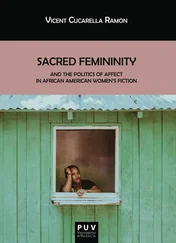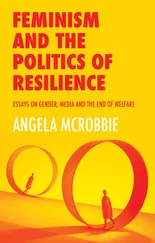I would also like to thank my research assistants Ana Urgiles, Eric Gilliam, Russell Clarida, and Nicole Southard, who were invaluable in providing materials on which the book is based.
I’m grateful for the support of my family and especially my wife, Laura, who has been a careful reader and critic of all my books.
Palo Alto and Carmel-by-the-Sea, California
1
THE POLITICS OF DIGNITY
Sometime in the middle of the second decade of the twenty-first century, world politics changed dramatically.
The period from the early 1970s through the mid-2000s witnessed what Samuel Huntington labeled the “third wave” of democratization as the number of countries that could be classified as electoral democracies increased from about 35 to more than 110. In this period, liberal democracy became the default form of government for much of the world, at least in aspiration if not in practice. {1} 1 Samuel P. Huntington, The Third Wave: Democratization in the Late Twentieth Century (Oklahoma City: University of Oklahoma Press, 1991).
In parallel to this shift in political institutions was a corresponding growth of economic interdependence among nations, or what we call globalization. The latter was underpinned by liberal economic institutions such as the General Agreement on Tariffs and Trade and its successor, the World Trade Organization. These were supplemented by regional trade agreements such as the European Union and the North American Free Trade Agreement. Throughout this period, the rate of growth in international trade and investment outpaced global GDP growth and was widely seen as the major driver of prosperity. Between 1970 and 2008, the world’s output of goods and services quadrupled and growth extended to virtually all regions of the world, while the number of people living in extreme poverty in developing countries dropped from 42 percent of the total population in 1993 to 17 percent in 2011. The percentage of children dying before their fifth birthdays declined from 22 percent in 1960 to less than 5 percent by 2016. {2} 2 Steven Radelet, The Great Surge: The Ascent of the Developing World (New York: Simon and Schuster, 2015), 4.
This liberal world order did not, however, benefit everyone. In many countries around the world, and particularly in developed democracies, inequality increased dramatically, such that many of the benefits of growth flowed primarily to an elite defined primarily by education. {3} 3 For a comprehensive account of the growth of global inequality, see Branko Milanovic, Global Inequality: A New Approach for the Age of Globalization (Cambridge, MA: Belknap Press, 2016).
Since growth was related to the increasing volume of goods, money, and people moving from one place to another, there was a huge amount of disruptive social change. In developing countries, villagers who previously had no access to electricity suddenly found themselves living in large cities, watching TV or connected to the internet via ubiquitous cell phones. Labor markets adjusted to new conditions by driving tens of millions of people across international borders in search of better opportunities for themselves and their families, or else seeking to escape intolerable conditions at home. Huge new middle classes arose in countries such as China and India, but the work they did replaced work that had been done by older middle classes in the developed world. Manufacturing moved steadily from Europe and the United States to East Asia and other low-labor-cost regions. At the same time, women were displacing men in an increasingly service-dominated new economy, and low-skilled workers were being replaced by smart machines.
Beginning in the mid-2000s, the momentum toward an increasingly open and liberal world order began to falter, then went into reverse. This shift coincided with two financial crises, the first originating in the U.S. subprime market in 2008 that led to the subsequent Great Recession, and the second emerging over the threat to the euro and the European Union posed by Greece’s insolvency. In both cases, elite policies produced huge recessions, high levels of unemployment, and falling incomes for millions of ordinary workers around the world. Since the United States and the EU were the leading exemplars, these crises damaged the reputation of liberal democracy as a whole.
The democracy scholar Larry Diamond has characterized the years after the crises as ones of a “democratic recession,” in which the aggregate number of democracies fell from their peak in virtually all regions of the world. {4} 4 Diamond, “Facing Up to the Democratic Recession,” 141–55.
A number of authoritarian countries, led by China and Russia, became much more self-confident and assertive: China began promoting its “China model” as a path to development and wealth that was distinctly undemocratic, while Russia attacked the liberal decadence of the European Union and the United States. A number of countries that had seemed to be successful liberal democracies during the 1990s slid backward toward more authoritarian government, including Hungary, Turkey, Thailand, and Poland. The Arab Spring of 2011 disrupted dictatorships throughout the Middle East, but then profoundly disappointed hopes for greater democracy in the region as Libya, Yemen, Iraq, and Syria descended into civil war. The terrorist upsurge that produced the September 11 attacks was not defeated by the U.S. invasions of Afghanistan and Iraq. Rather, it mutated into the Islamic State, which emerged as a beacon for profoundly illiberal and violent Islamists around the world. What was as remarkable as ISIS’s resilience was that so many young Muslims left lives of comparative safety elsewhere in the Middle East and Europe to travel to Syria to fight on its behalf.
More surprising and perhaps even more significant were the two big electoral surprises of 2016, Britain’s vote to leave the European Union and the election of Donald J. Trump as president of the United States. In both cases, voters were concerned with economic issues, particularly those in the working class who had been exposed to job loss and deindustrialization. But just as important was opposition to continued large-scale immigration, which was seen as taking jobs from native-born workers and eroding long-established cultural identities. Anti-immigrant and anti-EU parties gained strength in many other developed countries, most notably the National Front in France, the Party for Freedom in the Netherlands, the Alternative for Germany, and the Freedom Party in Austria. Across the Continent there were both fears of Islamist terrorism and controversies over bans on expressions of Muslim identity such as the burka, niqab, and burkini.
Twentieth-century politics had been organized along a left–right spectrum defined by economic issues, the left wanting more equality and the right demanding greater freedom. Progressive politics centered around workers, their trade unions, and social democratic parties that sought better social protections and economic redistribution. The right by contrast was primarily interested in reducing the size of government and promoting the private sector. In the second decade of the twenty-first century, that spectrum appears to be giving way in many regions to one defined by identity. The left has focused less on broad economic equality and more on promoting the interests of a wide variety of groups perceived as being marginalized—blacks, immigrants, women, Hispanics, the LGBT community, refugees, and the like. The right, meanwhile, is redefining itself as patriots who seek to protect traditional national identity, an identity that is often explicitly connected to race, ethnicity, or religion.
A long tradition dating back at least as far as Karl Marx sees political struggles as a reflection of economic conflicts, essentially as fights over shares of the pie. Indeed, this is part of the story of the 2010s, with globalization producing significant populations of people left behind by the overall growth that occurred around the world. Between 2000 and 2016, half of Americans saw no gains to their real incomes; the proportion of national output going to the top 1 percent went from 9 percent of GDP in 1974 to 24 percent in 2008. {5} 5 Ali Alichi, Kory Kantenga, and Juan Solé, “Income Polarization in the United States,” IMF Working Paper WP/16/121 (Washington, DC, 2017); Thomas Piketty and Emmanuel Saez, “Income Inequality in the United States, 1913–1998,” Quarterly Journal of Economics 118 (1) (2003): 1–39.
Читать дальше












